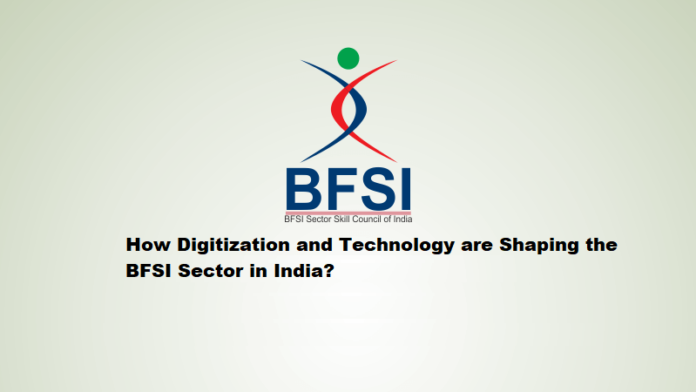Since the financial crisis of 2007-2009, the banking industry has faced a devastating phase from low credit growth to a damaged reputation. In 2020-2021, there were 7.6 crore customers active on digital channels in India.
The reason for this transformation can be traced not only to the banks dealing with the crisis but increasingly to the use of information technology and big data, together with highly specialized human capital.
This blog makes you understand the different ways how digitization and technology help in paving the path for the future.
How is technology transforming the BFSI Sector?
Digitization and technology have played a driving force in transforming the Banking and Financial Services Industry (BFSI) sector in India and globally.
According to the Reserve Bank of India annual report of 2020-21, the total digital transaction volume stood at 4,371 crores, against 3,412 crores in 2019-20. Thus, the current economy and the modern financial systems continue to disrupt the traditional ways of banking.
Technologies that can shape the BFSI sector
Here, we see a whole new spectrum of newer and faster banking solutions with the help of the following next-generation technologies.
Artificial Intelligence and Machine Learning
For frictionless and innovative banking operations, banks and financial service providers choose AI and ML technology. The AI-driven chatbots are the major attraction for the banking sector. Not only this, AI and ML have immense potential in the detection of financial fraud. It can offer a high level of accuracy in validating credit risk profiling that determines banks’ profitability.
Blockchain
Blockchain-based systems offer vastly enhanced transparency, trust, and native regulatory advantages, the blockchain adoption gets the Indian banking sector support from regulators.
With the help of this progressive technology, banks can process payments swiftly and above all, accurately. Blockchain reduces transactional costs and leads to the development of new banking products and services that can yield new lines of revenue.
Cloud technology
The volume of onboarding customers ramped up with digital banking, and an increase in the number of customers also increases the amount of data. It is the time when cloud technology can make a difference. As it is an adequate way to store, organize, and retrieve data with security and agility through cloud storage and cloud hosting India solutions.
Cloud technology helps the banks in improving their bank revenues, client service, and overall efficiency apart from reducing operating costs.
Robotic Process Automation
In the BFSI sector, Robotic Process Automation is used to create pre-programmed processes that can self-learn from extant data patterns and business decisions. These processes cut the administrative cost in half, while Robotic Process Automation still enhances the quality and agility of the banking process.
This technology also simplifies compliances by automatically generating the auditor reports and maintaining details of the automated processes. Robotic Process Automation and cognitive automation together can help banks to deal with future problems i.e. data overload.
ATMs upgradation
ATMs give a massive change in the life of customers. With the help of ATMs, customers can easily withdraw cash from anywhere and at any time. It allowed them to withdraw and deposit money, and updation of passbooks without having to wait for the banks to open.
Final Thoughts!
Adoption of advanced technology processes is more in the BFSI sectors instead in any other industry. Digitization and technology such as cloud technology, Artificial Intelligence, etc, will take the BFSI sector to greater heights by helping the banks in minimizing costs and making them efficient. It can boost customer satisfaction, and assuring a place in the digital future.
Thus, adopting and enforcing these technology trends will accelerate the digital transformation in the BFSI sector.
























































